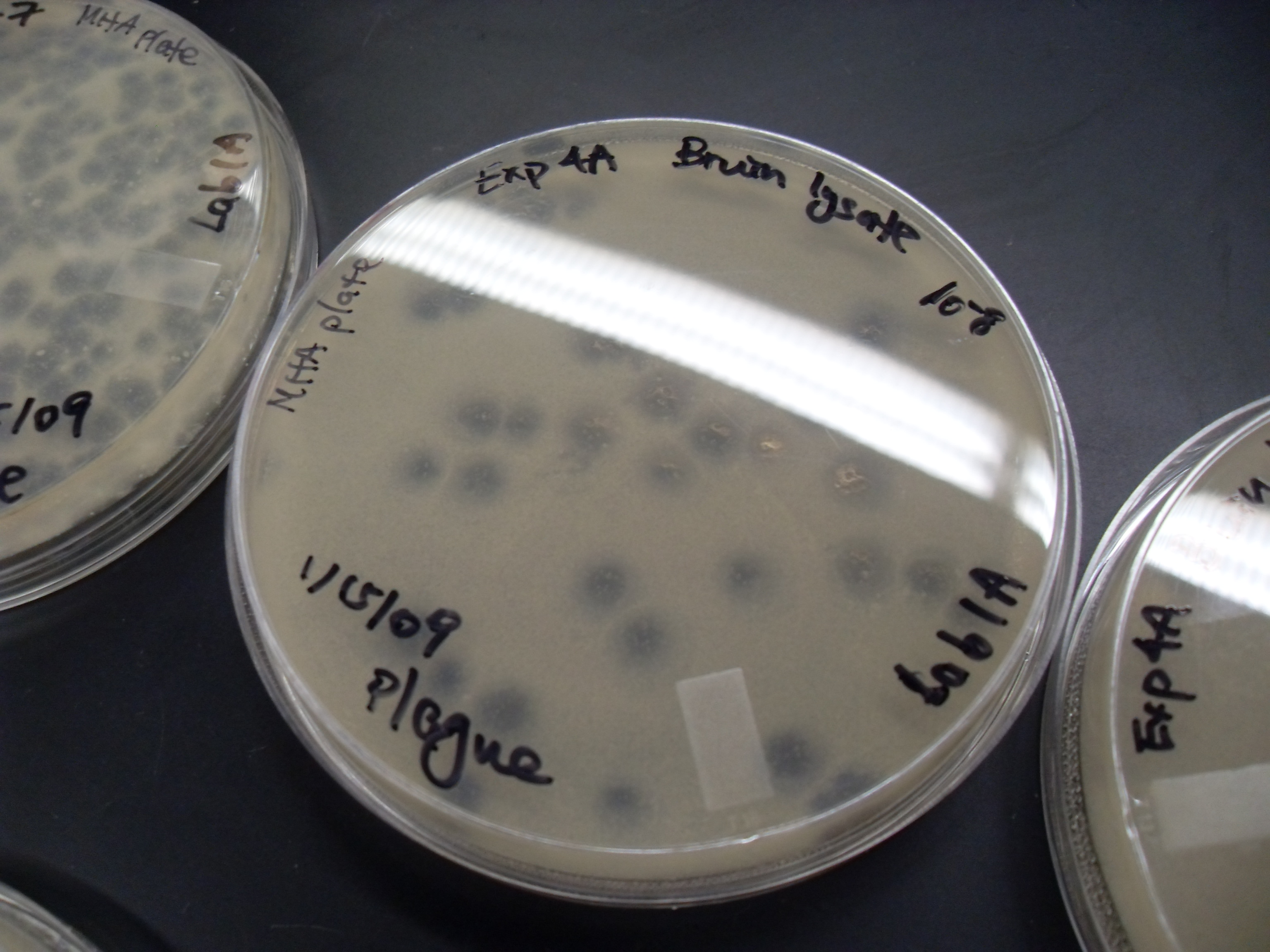Welcome to The Turbid Plaque
In 1915, the director of a veterinary hospital in London was trying to grow viruses in his lab. At the time, researchers had a general idea that viruses were some kind of ultra-small microbes. They caused diseases, but could pass through filters fine enough to remove all known bacteria. Unfortunately, nobody had figured out how to culture them. The veterinary hospital director, a physician named F. W. Twort, decided to use a brute-force approach. He tried every growth medium he could come up with: mixtures of plant and seed extracts and all sorts of broths, along with various combinations of agar, eggs, and serum. Nothing worked. Pure viruses simply weren’t culturable.
One day, he tried inoculating one of his mixtures with a bit of unfiltered smallpox vaccine. This produced a nice growth of bacteria; vaccine preparation was a sloppy business in 1915. Looking at these new bacterial cultures, Twort noticed something odd: some of the cultures seemed to die after awhile. The bacteria in them would stop growing, and the medium would become clear. Stranger still, this “glassy transformation” was infectious. Touch a sterile loop to a clear culture of bacteria, then touch it to a healthy culture, and soon the healthy culture would also turn clear.
Around the same time, a French-Canadian named Felix d’Herelle independently made a similar discovery. Donna Duckworth has written an excellent summary (PDF) of the subsequent brouhaha of academic and national politics that ensued as historians tried to assign priority for the finding to Twort or d’Herelle. We also discussed this on Episode 145 of This Week in Virology.
Political disputes aside, these two researchers had inadvertently discovered bacteriophages, viruses that infect bacteria. Twort’s sterile media couldn’t support viral growth, but petri dishes covered with bacteria could. The glassy transformation revealed that a virus is an obligate parasite, and led to the view that viruses invade their host cells, turn them into virus-producing factories, and then kill them to release a new generation of viruses. It’s a simple, endless cycle of elegant lethality.
The clear spots produced by viral growth, which d’Herelle called plaques, also provided a way to track and quantify viral infections. Each plaque arises from a single virus infecting a single bacterium. When that first infection finishes, the bacterium explodes (lyses), releasing progeny viruses that infect the surrounding cells. As the cycle repeats, the plaque grows into a clear spot on an otherwise opaque lawn of bacteria. A plaque is a single viral infection, amplified and made visible. If you put a measured quantity of a phage-containing solution on a bacterial lawn, then come back the next day and count the plaques, you can calculate exactly how many infectious viral particles were in the original solution. Later, when scientists learned how to grow cultures of mammalian cells, they used a modified version of this technique to study animal viruses.
 Phage plaques on a lawn of bacteria. Image from Wikipedia.
Phage plaques on a lawn of bacteria. Image from Wikipedia.
As bacteriologists continued working on phages, they made another odd discovery. Not all phages produced neat, clear plaques. Some yielded plaques that were as murky as a nasty academic dispute. Apparently some bacteria could tolerate certain phage infections and continue growing, establishing miniature colonies of survivors within the plaque. These turbid plaques were the first hint of lysogeny, a chronic viral infection in which the virus maintains its genome inside a host cell without killing it. Turbid plaques contradicted the simple explanation of viruses as one-trick killing machines, revealing a richer and more nuanced story.
That discovery later led to the finding that many medically important viruses, such as herpesviruses and HIV, are masters of the slow, chronic infection. They have sophisticated regulatory systems to turn their cell-killing capabilities on or off in different circumstances, allowing them to spread more effectively through the human population. Figuring out viral gene regulation helped researchers understand human gene regulation, which in turn uncovered still more fascinating and bizarre phenomena.
The story of plaques is the story of science. We set out to study one thing, stumble across some trivial-seeming glitch, and suddenly find ourselves exploring another world, within another, within another. We develop a tidy story, then hack it to bits and reassemble it when new evidence arises, then repeat the process. It’s confusing and endlessly fascinating, and the results affect everyone. We’ll never get to the bottom of it all. That’s what’s so great about it.
The Turbid Plaque is a blog about science, the people who do it, the stories we tell about it, and how we react to it. It won’t be exhaustive or authoritative, and it will get messy sometimes. I hope you’ll come along for the ride.